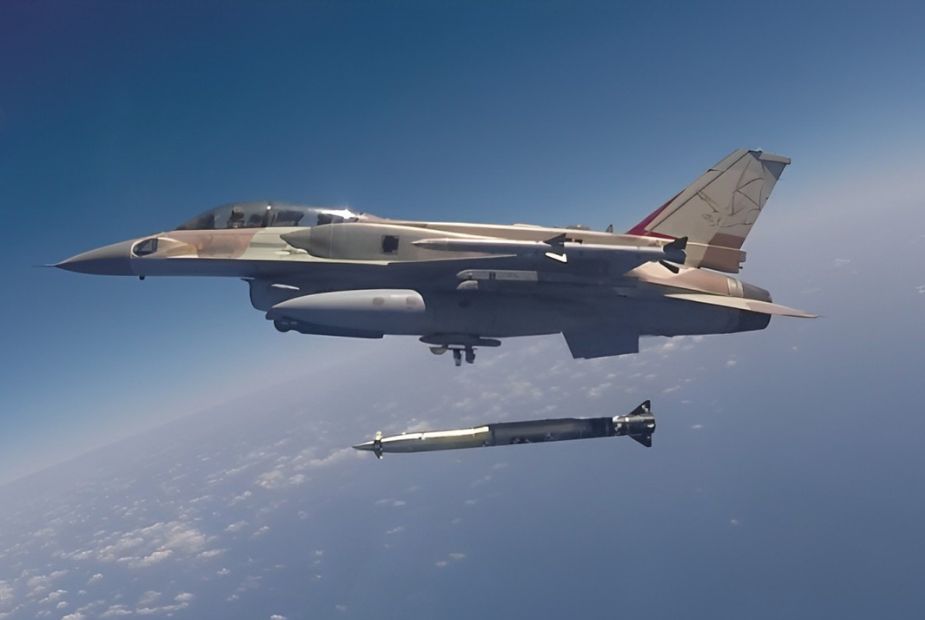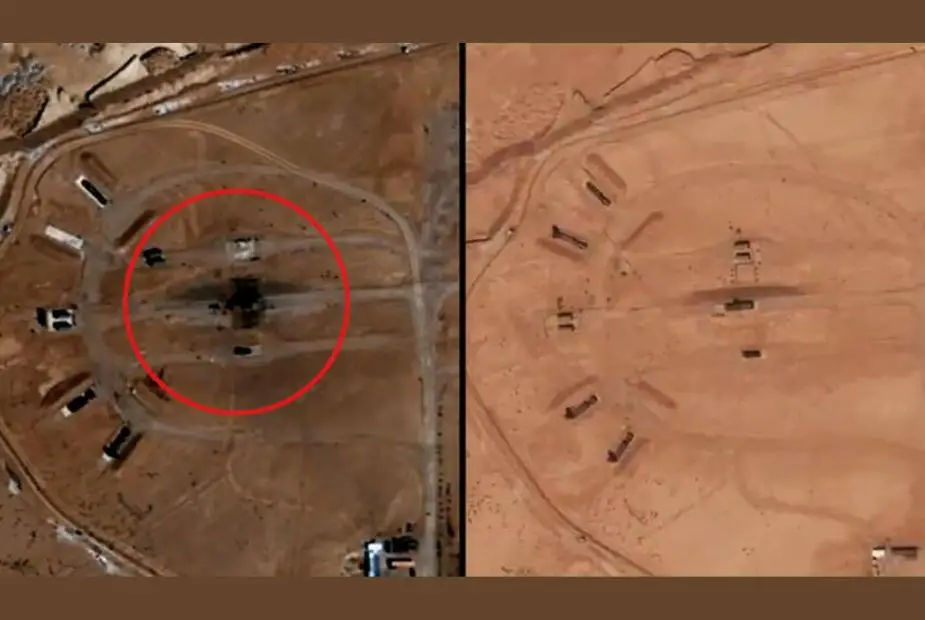Breaking news
Israel Uses Indigenous Rampage Missile in Strategic Strike on Iranian Base.
In a nighttime strike on April 18, 2024, Israel deployed a locally developed air-to-ground missile, the "Rampage," to target an Iranian military base near Isfahan, according to a Hebrew media report cited by the Times of Israel. This 4.7-meter missile, capable of supersonic speeds, is difficult to detect and intercept by air defense systems, including robust Russian systems.
Follow Army Recognition on Google News at this link

The Rampage is a long-range precision strike weapon suitable for all-weather operations and high-survival scenarios (Picture source: Israel Aerospace Industries )
The strike was in response to a significant Iranian attack on Israel the previous week, which involved approximately 300 unmanned aerial vehicles, cruise missiles, and ballistic missiles targeting the Jewish state. Satellite images captured post-strike show the extensive damage at the Iranian base, highlighting the strike's precision and Israel's capability to bypass and neutralize Iranian defensive measures.
Developed by Israeli Military Industries Systems and Israel Aerospace Industries, the "Rampage" was introduced in 2018. Designed to penetrate and destroy well-defended sites such as bunkers, its stealth features minimize radar detection, making it highly effective against advanced air defense systems.
The Rampage is a long-range precision strike weapon suitable for all-weather operations and high-survival scenarios. It operates autonomously, with fire-and-forget capabilities, and can carry up to four missiles per aircraft. Its technical specifications include a blast fragmentation or general-purpose warhead with a 10-meter Circular Error Probable accuracy and an impact velocity of 350-550 meters per second. The missile supports integration with various aircraft, either standalone or through an avionic system, and facilitates video transmission via an RS-170 interface and wireless communication.
Typical targets for the Rampage include air force bases, control towers, ammunition depots, bunkers, air defense assets, logistics centers, communication infrastructure, and command posts. With a weight of approximately 570 kg, a length of 4.7 meters, and a diameter of 306 mm, the Rampage offers a cost-effective solution for precision long-range strikes.

Satellite images show the damage caused by the attack, attributed to Israel, on the Shikari Air Base near Isfahan (Picture source: Alma Research and Education Center)
A video published on Sunday morning on X by Fardad Farhzad, a correspondent for the opposition site Iran International, shows significant damage to the air defense systems at the site. The Shikari Base is located near the city's international airport. Potential targets at this base include bunkers, aircraft hangars, and air defense systems, consisting of launchers and radars, according to the Alma Research and Education Center. Isfahan is also home to other military facilities, including an underground base for ballistic missiles in the city's northwest.
According to the London-based Arabic-language newspaper Asharq Al-Awsat, the attacked base is one of the most important centers of the Iranian Air Force and houses the most advanced fighter jets in its arsenal. A site affiliated with the intelligence of the Iranian Revolutionary Guards Corps reports that the base, known as Shahid Baba'i, is "the heart of the Iranian Air Force" and includes 17 air bases. The base accommodates three fighter squadrons and two training squadrons of the Iranian Air Force, including F-7, F-14, and Sukhoi Su-24 aircraft.
The base is located northeast of Isfahan, about 12 miles from the nuclear research reactor and the industrial parks associated with the Iranian defense establishment and the Badr drone base in the southeast of Isfahan. It is also located 75 miles from the Natanz uranium enrichment facility, 175 miles from the Arak heavy water nuclear reactor, and about 155 miles from the Fordow underground uranium enrichment facility, which is burrowed under the mountains of the city of Qom.
Meanwhile, Iran's foreign minister downplayed the incident by comparing the Israeli drones used to "toys," a claim not yet publicly addressed by Israeli officials. Iran insists that only three small drones were involved in the Isfahan attack, not missiles. Israeli broadcaster Kan highlighted that "The Rampage" was identified from photographs and the extent of the damage. This follows claims from The New York Times, citing unnamed officials, that the selection of this advanced weapon was intended to make Iran reconsider before launching another direct attack on Israel.
American media sources have reported that Israeli drones targeted and damaged critical elements of Iran's air defense infrastructure, specifically impacting a battery of the advanced S-300 PMU2 air defense missile system and its associated 30N6E engagement radar.
Defense News April 2024























